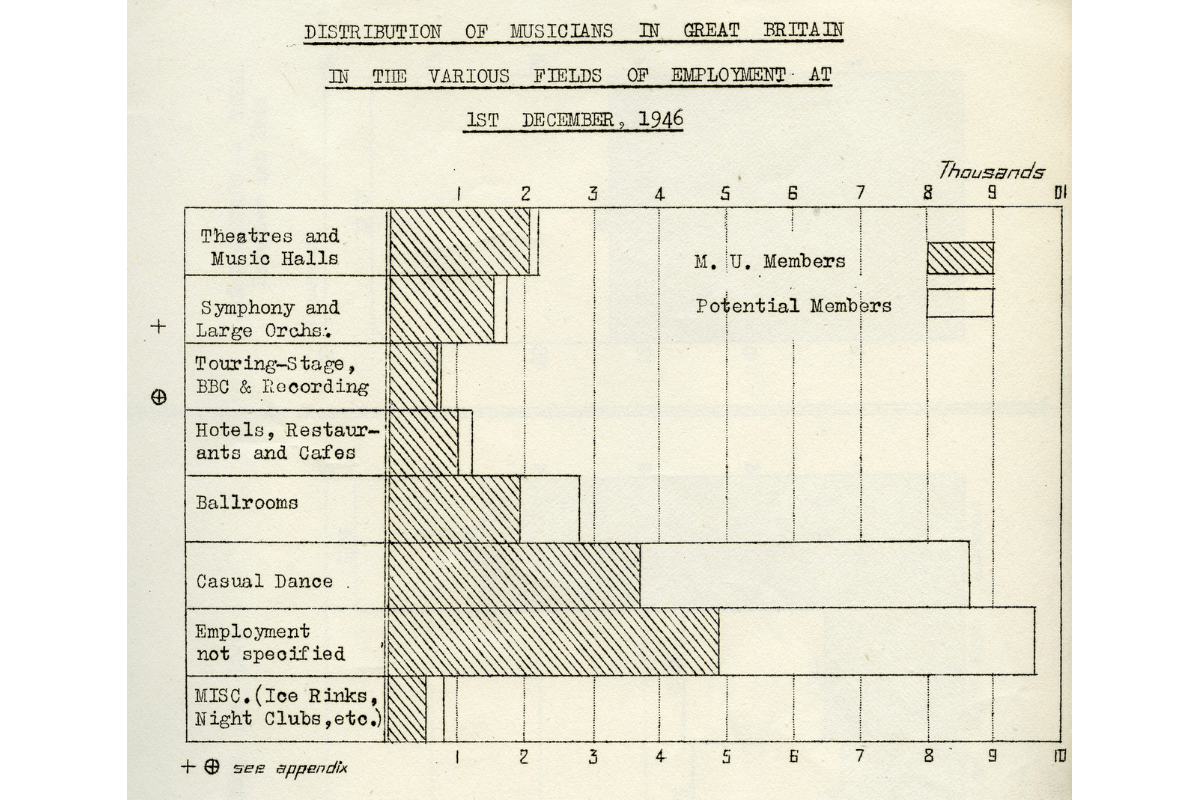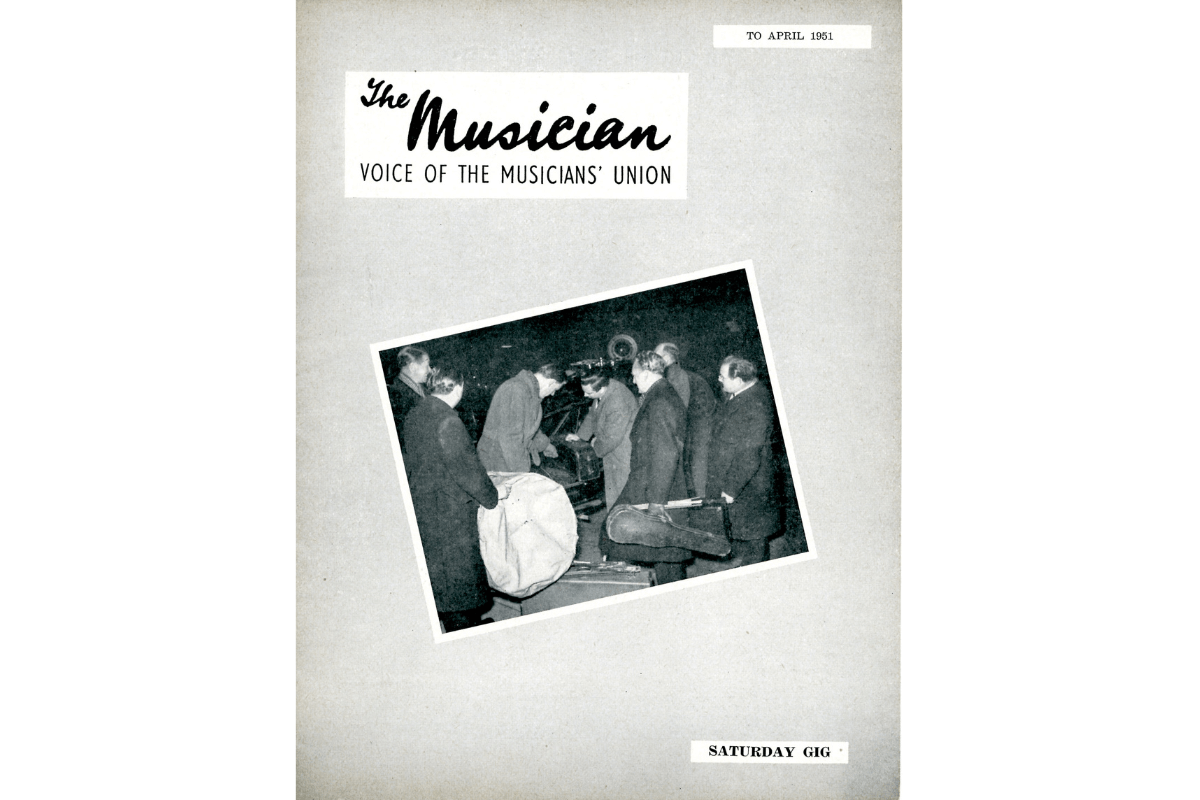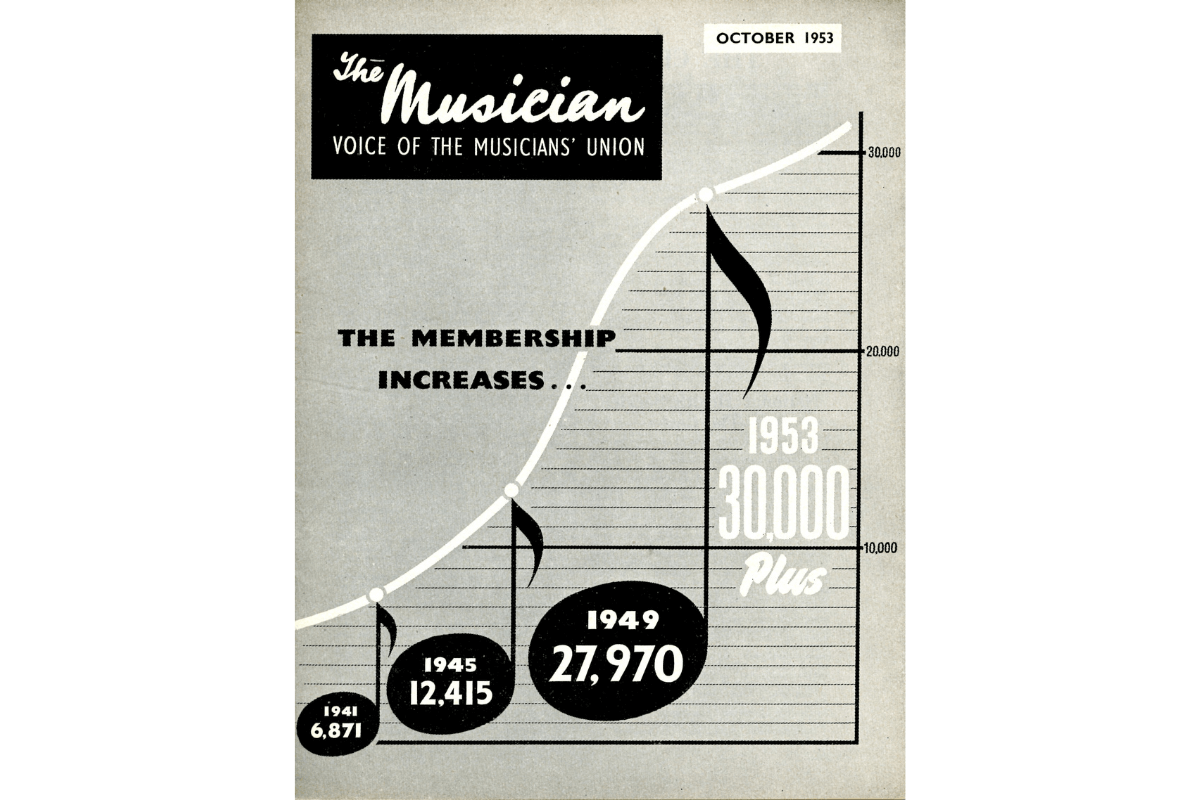In March 1947 the MU issued a “Report upon a survey of the field of employment of members and potential members of the Musician’s Union.”
Tucked away in a box of reports and papers in the Union’s archive at the University of Stirling, the detailed 15 page document was the first time the union had carried out a comprehensive survey of its members. The introduction to the report noted its “purpose was to establish how far the Union has succeeded in organising the music profession, and how much remains to be done.”
Today, over 75 years later, it provides a fascinating snapshot of Britain’s musical landscape in the immediate aftermath of the Second World War, recording the situation as it existed on 1 December 1946.
Employment categories in 1947 captured a musical landscape very different to today
The report presented detailed information at both local and national levels, breaking down actual and potential union membership into the key areas of employment at the time.
The survey recorded a musical scene very different to the pre-war period, when cinema orchestras provided opportunities for jobbing musicians and captures the brief period before the explosion of jazz, skiffle and rock and roll bands in the 1950s.
The categories recorded in 1946 present a musical landscape very different to today with theatres, music halls, hotels, restaurants, cafes, ballrooms and even ice rinks providing employment for professional musicians.
The largest sector identified in the report was the ‘Casual Dance’ scene, with dance bands entertaining the public at venues across the country. The survey counted a total of 1,381 casual dance bands employing over 8,000 of the Union’s members, with huge potential for attracting new members from players.
 The largest sector identified in the report was the ‘Casual Dance’ scene. Image credit: The Musicians' Union ©
The largest sector identified in the report was the ‘Casual Dance’ scene. Image credit: The Musicians' Union ©
A colossal task
The report was created by Alex Mitchell, the Union’s General Organiser, who collated data sent to him by union officials across Britain “by means of printed questionnaires.”
The Union’s Archive includes a set of Mitchell’s weekly reports detailing his activities while travelling the country on Union business. In these reports Mitchell is at pains to stress the huge amount of work he put into producing the survey. In December 1946 he reported that:
“This is the first Statistical Survey in the Union’s history, and not many (if any) other Unions have undertaken such a survey. It has been a colossal task and has been like getting blood out of stone.
“The overwhelming majority of Branches and Officials responded most helpfully and have proved beyond doubt that the Union’s organisational machine can make a successful Statistical Survey.”
Mitchell provided an update on his efforts in February 1947:
“I was able to breathe a sigh of relief as now the survey data is complete. All I had to do now (in my spare time) was to count up thousands of figures, vertically and horizontally: checking and re-checking: rewrite the town tables, district tables and the table of totals for Great Britain.”
The Union has a responsibility to all musicians
In the introduction to the report Mitchell noted the survey data “now makes possible a more systematic direction of the Union’s efforts to complete the organisation of the profession, and to achieve 100% trade unionism for musicians.”
The report calculated union membership in December 1946 as being 16,531 and estimated its potential to grow to the precise figure of 27,701.
 Illustration cover of The Musician, April 1951. Image credit: The Musicians' Union ©
Illustration cover of The Musician, April 1951. Image credit: The Musicians' Union ©
The information presented in the report was of great benefit to the Union in its attempts to increase its post-war membership. The Union’s efforts to support musicians working in the growing dance band scene can be seen in the pages of The Musician magazine.
The April 1951 issue features a photograph of a dance band on its cover, the accompanying caption introducing this new class of musician to its readers as follows:
“Saturday Night. The only night when some dance musicians work. Some do more – some do less. The Union has a responsibility to all of them.”
In the following issue of the magazine Hardie Ratcliffe, the Union’s General Secretary, wrote an article focusing on the dance band scene. Ratcliffe noted that “the gig on Saturday night is the mainstay of the casually employed dance musicians” who played to feed the “demands of dancers” every weekend. Setting out the Union’s support for Saturday night players he noted the success of efforts “to control the public use of records” in clubs creating continued opportunities for dance bands to play.
The recruitment campaign sparked by the post-war survey proved a great success, the October 1953 issue of The Musician proudly displaying a graph showing membership reaching 30,000 on its cover.
 Illustration cover of The Musician, October 1953. Image credit: The Musicians' Union ©
Illustration cover of The Musician, October 1953. Image credit: The Musicians' Union ©
The 2023 Census will provide another historical snapshot for future generations
The musical scene may have dramatically changed since the dance band days of the 1950s but the fight for better working conditions is still at the core of the Musicians’ Union activities.
The 2023 Musicians’ Census will provide a vital tool in this ongoing task. For the archivist, it will have the added value of providing another historical snapshot of the musical health of the nation for future generations of musicians and researchers.
About the Musicians’ Union Archive
The University of Stirling Archives holds and collects the archives of the Musicians’ Union. The collection provides a unique perspective on the cultural history of Britain over the last 130 years through the experiences and struggles of the musicians and performers who entertained a nation.
Find out more